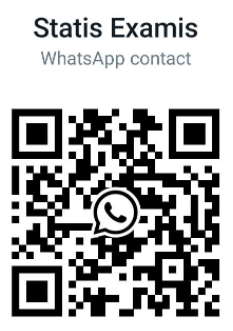Navigation » List of Schools » Prince George Community College » Biology » Bio 2050 – Anatomy and Physiology » Summer 2021 » Lecture Exam 1
Question #1
A the basic structural unit of all living organisms.
B a structure composed of several tissue types.
C a small structure within a cell.
D a group of cells with similar structure and function.
Question #2
A melanocytes
B Langerhans cells
C Merkel cells
D keratinocytes
Question #3
A metabolism.
B positive feedback.
C neutral feedback.
D negative feedback.
Question #4
A skeletal system.
B digestive system.
C respiratory system.
D endocrine system.
Question #5
A packaging “cell products” for export.
B cell movement and cell shape.
C manufacturing lipids.
D protein synthesis.
Question #6
A two different ions or molecules in opposite directions
B one specific ion or molecule
C two of the same ions or molecules in the same direction
D two different ions or molecules in the same direction
Question #7
A floats.
B ruptures.
C gains water.
D loses water.
Question #8
A radiology
B physiology
C histology
D gross anatomy
Question #9
A lymphatic
B urinary
C nervous
D cardiovascular
Question #10
A an increase in the distance the molecules have to travel
B an increase in the viscosity of the solvent
C an increase in the molecular weight of the diffusing particles
D an increase in the temperature
Question #11
A biocytosis.
B pinocytosis.
C phagocytosis.
D calmly regulated diffusion.
Question #12
A produce a secretion that oils the hair and skin.
B produce a secretion that protects the body from growth of bacteria.
C aid in cooling the body.
D serve as “anchors” for the arrector pili muscles.
Question #13
A Generally, cations pass through the membrane more easily than anions.
B Polar molecules are transported more easily than nonpolar molecules.
C Lipid-soluble substances pass through the membrane by dissolving in the lipid bilayer.
D Water cannot move through the membrane.
Question #14
A water
B sodium
C urea
D oxygen
Question #15
A regulation of acid-base balance.
B detection of heat and touch.
C production of Vitamin E.
D protection from cancer.
Question #16
A simple columnar epithelium
B adipose tissue
C areolar connective tissue
D cardiac muscle tissue
Question #17
A form a monolayer.
B create a non-selectively permeable barrier.
C have polar phosphate heads.
D have polar fatty acid tails.
Question #18
A Most sebaceous glands are connected by a duct to the upper portion of the hair follicle.
B Secretions from sebaceous glands provide protection against bacteria.
C Secretions from sebaceous glands oil the hair and skin.
D Sebaceous glands are an example of apocrine glands.
Question #19
A stratum lucidum
B stratum granulosum
C stratum spinosum
D stratum basale
Question #20
A stratum lucidum
B stratum granulosum
C stratum spinosum
D stratum corneum
Question #21
A Decreases in blood pressure cause a corresponding decrease in heart rate.
B When a person drinks large quantities of water, urine output decreases to raise blood volume.
C Elevated blood glucose levels cause insulin secretion to decline.
D As body temperature rises, sweating occurs to cool the body.
Question #22
A cytosol
B cisternae
C chromosome
D cristae
Question #23
A epithelial, connective, muscle, nervous
B connective, skeletal, epithelial, nervous
C muscle, nervous, skeletal, connective
D epithelial, skeletal, connective, reticular
Question #24
A marker molecules
B receptor proteins
C enzymes
D channel protein
Question #25
A melanocytes.
B dermal papillae.
C melanocytes.
D dermal striae.
Question #26
A stop moving across the membrane
B move across the membrane, but equally in both directions
C move across the membrane to the outside of the cell
D move across the membrane to the inside of the cell
Question #27
A the production of energy by cells.
B the maintenance of a relatively constant environment within the body.
C an amplification of deviation from the normal range.
D the combination of growth, self-repair, and energy release.
Question #28
A diffusion.
B facilitated diffusion.
C endocytosis.
D passive transport.
Question #29
A Men working in a hot environment drink large quantities of water, and their urine volume increases.
B As the mean blood pressure gradually increases in aging people, the blood vessel walls become thinner.
C Elevated blood glucose levels cause insulin secretion (insulin causes cells to take up glucose) to increase.
D As blood pressure falls, blood flow to cardiac (heart) muscle decreases.
Question #30
A Hypodermis is composed of dense connective tissue with collagen and elastin fibers.
B Hypodermis is referred to as subcutaneous tissue.
C The hypodermis is a site of fat storage.
D The hypodermis attaches the skin to underlying bone and muscle.
Question #31
A desmosomes
B gap junctions
C adhering junctions
D tight junctions
Question #32
A osetocyte and elastic fibers
B cells and fibers
C fibroblast and fibers
D ground substance and fibers
Question #33
A systemic
B regional
C developmental
D histology
Question #34
A centriole
B mitochondrion
C microtubule
D nucleus
Question #35
A provide a tunnel through which ions or molecules can enter or leave the cell.
B allow cells to recognize one another.
C utilize the G protein complex to function.
D are found only on endoplasmic reticulum.
Question #36
A produce ATP.
B control and coordinate cellular activities.
C digest lipids.
D produce secretory vesicles.
Question #37
A stratum spinosum, stratum basale, stratum lucidum, stratum corneum, and stratum granulosum
B stratum basale, stratum granulosum, stratum lucidum, stratum spinosum, and stratum corneum
C stratum lucidum, stratum granulosum, stratum corneum, stratum basale, and stratum spinosum
D stratum basale, stratum spinosum, stratum granulosum, stratum lucidum, and stratum corneum
Question #38
A 23415
B 12534
C 51243
D 34251
Question #39
A stratum granulosum.
B stratum basale.
C stratum lucidum.
D stratum corneum.
Question #40
A cardiovascular
B lymphatic
C integumentary
D hormonal
Question #41
A is a rigid protein membrane.
B separates the nucleus from the rest of the cell.
C regulates movement of materials into and out of the cell.
D has a single layer of phospholipids.
Question #42
A lipids and ions.
B carbohydrates, ions, and lipids.
C proteins, lipids, and carbohydrates.
D proteins and carbohydrates.
Question #43
A vitamin A
B vitamin B
C vitamin C
D vitamin D
Question #44
A protein carriers
B concentration gradient
C cell membrane
D aquaporins
Question #45
A active transport.
B facilitated diffusion.
C endocytosis.
D diffusion.
Question #46
A carrier proteins
B channel protein
C marker molecules
D receptor proteins
Question #47
A histology
B radiology
C gross anatomy
D physiology
Question #48
A The epidermis contains numerous blood vessels.
B The most numerous cells in the epidermis are the melanocytes.
C The dermis is superficial to the epidermis.
D The epidermis is nourished by blood vessels located in the dermis.
Question #49
A it is anchored to a basement membrane
B it lacks blood vessels
C it functions in secretion, absorption, and excretion
D epithelial cells are loosely packed and have little intercellular material
Question #50
A more melanocytes than races with darker skins.
B more melanin in their skin.
C approximately the same number of melanocytes as races with darker skins.
D fewer melanocytes than races with darker skins.
Question #51
A Moveable joints allow us to bend our fingers to perform many different actions.
B The basic structural unit of the body is the cell.
C Each tissue type is composed of cells that have a similar structure and function.
D The internal environment of the body is maintained in a relatively stable condition.
Question #52
A marker molecules
B channel protein
C receptor proteins
D enzymes
Question #53
A outside the cell to a region inside the cell.
B of higher concentration to a region of lower concentration.
C of lower concentration to a region of higher concentration.
D inside the cell to a region outside the cell.




